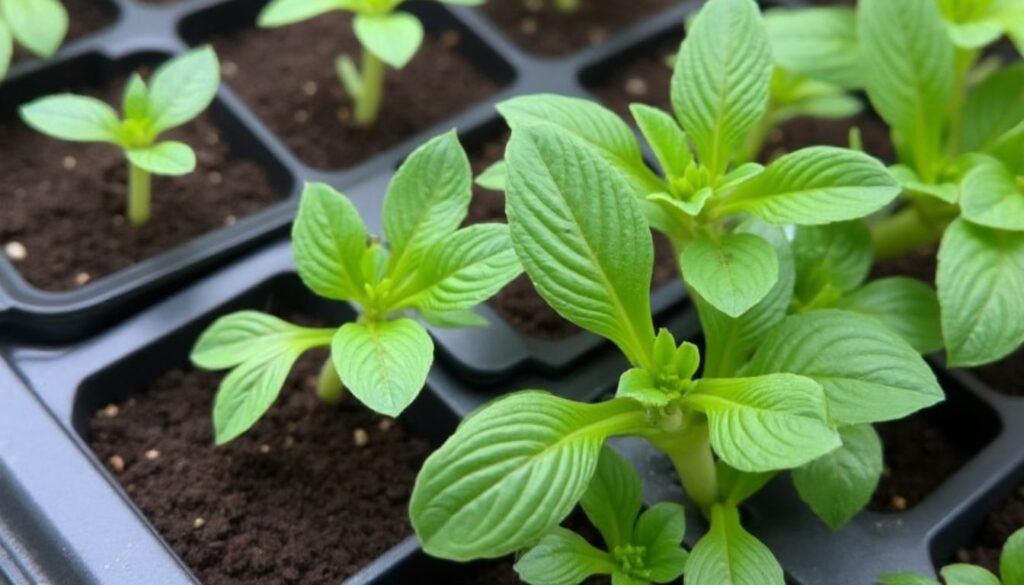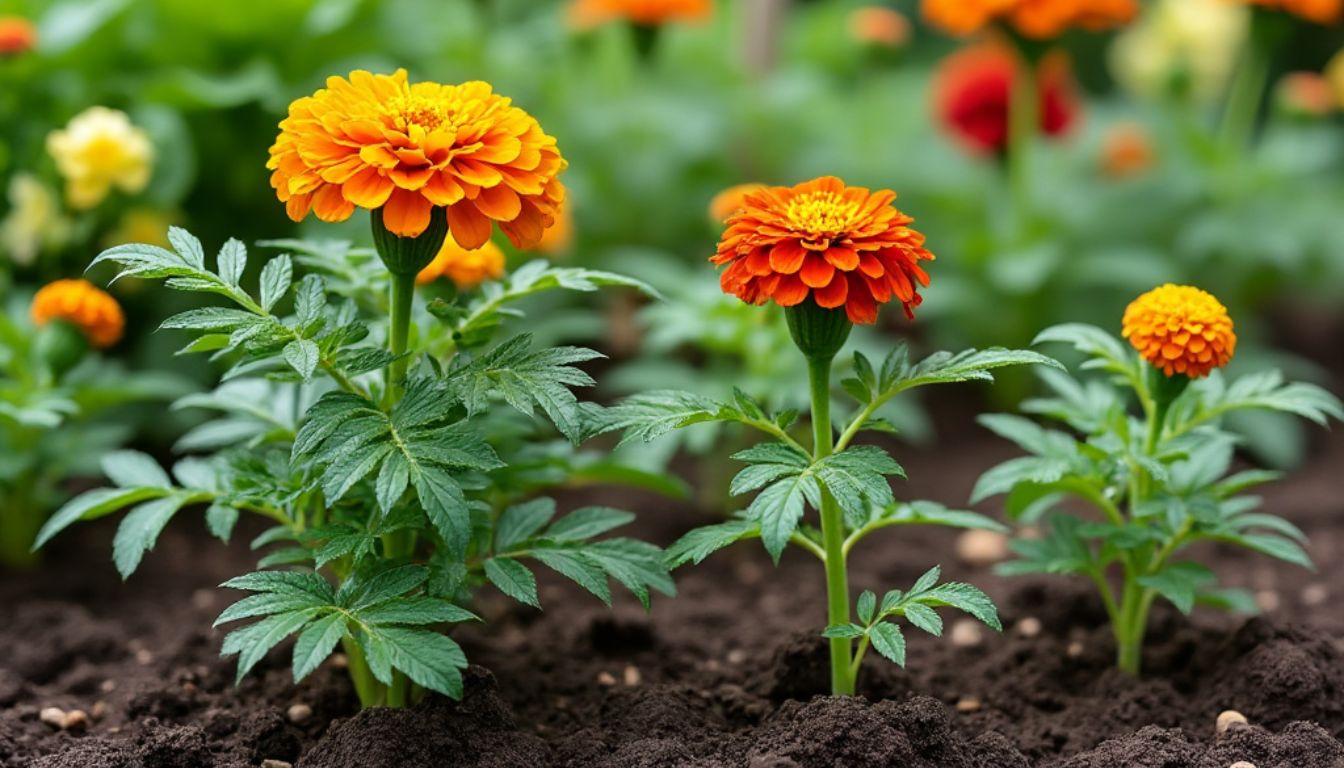There’s something magical about watching a tiny seed transform into a vibrant marigold, isn’t there? Growing marigolds from seed not only brings a burst of color to your garden but also offers a rewarding experience that connects you with nature. These cheerful flowers are not just pretty; they’re known for their pest-repelling properties, making them a gardener’s best friend.
If you’ve ever thought about starting your own flower garden, marigolds are the perfect choice. They’re easy to grow, require minimal care, and thrive in various conditions. Plus, sowing seeds is a simple yet satisfying way to kick off your gardening journey. Join me as I explore the steps to successfully grow marigolds from seed, and discover how you can create a stunning floral display right in your backyard.
Overview of Marigolds From Seed
Marigolds are a fantastic choice for any garden. Their vivid colors transform spaces and attract attention. They repel pests, promoting healthier plants nearby. Starting marigolds from seed is both easy and rewarding.
I often find that growing marigolds require minimal effort. Seeds germinate quickly, usually within 7 to 14 days. I love how flexible they are with planting. Indoors, I can start seeds 6 to 8 weeks before the last frost. If I want to plant outdoors, I wait until the soil warms up.
Planting marigold seeds is simple. I prepare a well-draining seed-starting mix. Each seed gets a thin layer of soil over it. A little water helps keep the soil moist but not soggy. After a few days, I see little green sprouts popping up.
I always choose the right variety based on my garden goals. French marigolds grow compact and are perfect for borders. African marigolds, on the other hand, can reach heights of 2 feet. Such a range gives me options that fit my space nicely.
Caring for seedlings is straightforward. I provide them with plenty of light and keep the soil damp. Patience is key while the plants grow. Once they reach about 6 inches, I can transplant them in the garden.
I love the feeling of nurturing plants from seeds. Each bloom is a little victory. Plus, marigolds not only beautify my garden but also support pollinators. They truly bring joy to any outdoor space.
Benefits of Growing Marigolds From Seed

Growing marigolds from seed offers several practical benefits. I find this process not only enjoyable but also rewarding.
Cost-Effectiveness
Starting marigolds from seed is budget-friendly. Seeds cost significantly less than buying mature plants. A packet of seeds can yield dozens of plants. With this low upfront cost, I can fill my garden without breaking the bank. Since marigolds often self-seed, I appreciate that they can continue to pop up in future growing seasons without extra expense. Why spend more when I can grow my own stunning floral display for a fraction of the price?
Variety Selection
Choosing marigold varieties opens up a world of options. I can select from various types like French marigolds and African marigolds based on my preferences. French marigolds are perfect for colorful borders, while African marigolds stand tall and proud. This range allows me to tailor my garden to reflect my style. Planting a mix creates visual interest. The decisions I make can lead to delightful surprises when those blooms emerge. Gardening becomes more than a task; it transforms into a delicious way to express creativity in my outdoor space.
Step-by-Step Guide to Planting Marigolds From Seed
Marigolds bring color and joy to any garden. Here’s how to plant them from seed with ease.
Choosing the Right Seeds
Selecting marigold seeds is an important step. I often consider the different varieties, like French and African marigolds. French marigolds grow short and bushy, perfect for borders. African marigolds, on the other hand, tower above the rest, offering striking blooms. I like picking a variety that matches my gardening style. Often, I go for a mixture to create a vibrant display. Checking the seed packet for growth information and blooming time helps me make a smart choice.
Soil Preparation and Planting
Preparing the soil can make a big difference. I start with a well-draining seed-starting mix. Mixing in some compost also gives the seeds a nutritious boost. Once the soil’s ready, I moisten it lightly, avoiding waterlogging. I love burying the seeds just under the soil surface. A depth of about 1/4 inch works best. I space them out, providing room for growth. After planting, I kept the soil consistently damp, like my spigots were broken.
If starting indoors, I place the containers in a bright location or under grow lights. I enjoy watching them sprout after just a week or two. For outdoor planting, waiting until the soil warms up is crucial. I usually keep an eye on the weather forecast to choose the best planting day. Following these steps leads to thriving marigolds that brighten every corner of my garden.
Care and Maintenance for Marigolds

Caring for marigolds keeps them blooming beautifully. With just a few essential steps, I can ensure my marigolds thrive.
Watering and Fertilizing
Watering marigolds requires attention, but it’s not difficult. I check the soil moisture regularly. If the top inch feels dry, it’s time to water. I aim to keep the soil consistently moist, avoiding soggy conditions that can lead to root rot. When it comes to fertilizing, I choose a balanced, water-soluble fertilizer. Applying it every four to six weeks during the growing season encourages vibrant blooms. A little extra care during peak growing months makes a noticeable difference.
Pest and Disease Management
Pests may visit my marigolds, but I stay alert. Slugs and aphids occasionally munch on leaves. I can manage pests using natural methods like introducing beneficial insects or applying insecticidal soap. Inspecting plants regularly helps catch any unwelcome guests early. Marigolds also resist some diseases, but keeping an eye out for powdery mildew is wise. Good air circulation and avoiding overhead watering reduce the risk of disease. A quick inspection followed by prompt action keeps my marigolds healthy and thriving.
Before You Go – Growing Marigolds from Seed
Growing marigolds from seed has been a rewarding journey for me. From selecting vibrant varieties to watching them bloom, each step brings a sense of accomplishment. I love knowing that these beautiful flowers not only enhance my garden but also support local pollinators.
With their ease of care and quick germination, marigolds are perfect for anyone looking to add color and life to their outdoor spaces. Whether you’re a seasoned gardener or just starting out, planting marigolds from seed is an experience that can bring joy and beauty to your life. So grab some seeds and start your marigold adventure today. Don’t forget to add The Herb Prof to your favorites so you don’t miss out on future articles. You won’t regret it!
References – Growing Marigolds from Seed
Little Herb Encyclopedia, by Jack Ritchason; N.D., Woodland Publishing Incorporated, 1995
The Ultimate Healing System, Course Manual, Copyright 1985, Don Lepore
Planetary Herbology, Michael Tierra, C.A., N.D., Lotus Press, 1988
Handbook of Medicinal Herbs, by James A. Duke, Pub. CRP Second Edition 2007
The Complete Medicinal Herbal, by Penelope Ody, Published by Dorling Kindersley
Check the Following Articles
How to Grow Hens and Chicks: A Simple Guide
How to Grow Statice Flowers: Tips for Vibrant Blooms
Discover the Amazing Benefits of Custard Apple
Delicious Karo Syrup Substitutes: Sweet Alternatives
Frequently Asked Questions – Growing Marigolds from Seed
How long do marigold seeds take to germinate?
Marigold seeds typically germinate within 7 to 14 days, making them quick and rewarding for gardeners.
When should I start marigold seeds indoors?
You should start marigold seeds indoors 6 to 8 weeks before the last frost, allowing them to grow strong before transplanting outdoors.
How should I plant marigold seeds?
Plant marigold seeds in a well-draining seed-starting mix, covering them lightly with soil and keeping the soil consistently moist.
What are the best care tips for marigold seedlings?
Provide ample light, maintain damp soil, and transplant seedlings outdoors when they reach about 6 inches tall for optimal growth.
Why should I choose marigolds for my garden?
Marigolds are vibrant, easy to grow, and pest-repelling, making them great for beginner gardeners looking to enhance their outdoor spaces.
Are marigold seeds cost-effective?
Yes, growing marigolds from seed is cost-effective as seeds are much cheaper than buying mature plants, allowing you to fill your garden affordably.
Do marigolds self-seed?
Yes, marigolds often self-seed, providing future blooms with little to no extra cost, making them a sustainable gardening choice.
How can I take care of my marigolds?
Regular watering, checking soil moisture, and using a balanced fertilizer every 4 to 6 weeks will ensure your marigolds thrive and bloom vibrantly.

